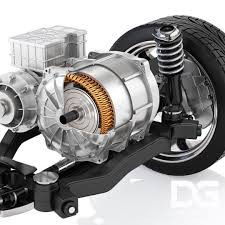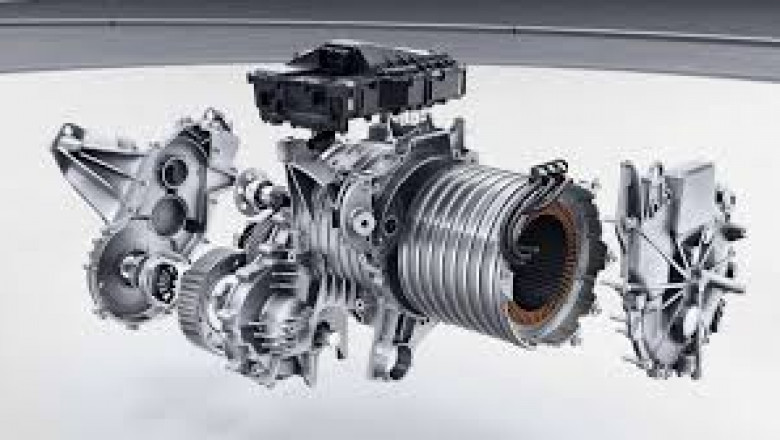views
The electric vehicle motor market has become a cornerstone of the global transition toward sustainable transportation. As governments, automakers, and consumers increasingly prioritize electric mobility, the demand for efficient and reliable EV motors is surging. Despite the optimistic outlook and rapid advancements, the market continues to face significant hindrances that challenge its smooth expansion and widespread adoption. These obstacles range from technical issues and supply chain risks to economic and regulatory barriers. This article delves into the primary hindrances impacting the electric vehicle motor market and examines their implications for the industry’s development.

High Cost of Production
One of the most pressing hindrances in the EV motor market is the high production cost associated with manufacturing advanced electric motors. Compared to conventional internal combustion engines, EV motors require expensive raw materials such as rare earth magnets, high-purity copper, and advanced semiconductor components for power electronics.
These materials not only add to the overall cost but are also subject to market fluctuations, creating price instability. The intricate manufacturing processes further drive up expenses, making electric motors—and consequently electric vehicles—more expensive than their traditional counterparts. This cost premium remains a major barrier to widespread consumer adoption, particularly in emerging economies where price sensitivity is pronounced.
Dependence on Rare Earth Elements
Many electric motors, especially those using permanent magnet synchronous motor (PMSM) designs, rely heavily on rare earth elements like neodymium and dysprosium. These materials are vital for producing strong magnets that enable efficient motor performance.
However, rare earth elements are concentrated in specific geographical regions, making their supply susceptible to geopolitical tensions, export restrictions, and trade disputes. This dependence poses a risk of supply shortages and price volatility, hindering the ability of manufacturers to produce motors at scale and stable costs.
Efforts to develop rare earth-free motor technologies or improve recycling methods are underway, but commercial viability and performance parity remain challenges.
Technological Complexity and Reliability Concerns
Electric motors for vehicles must meet demanding requirements related to power density, efficiency, thermal management, and durability. Designing motors that balance these factors while remaining cost-effective is highly complex.
Thermal management, in particular, is a critical challenge. Electric motors generate significant heat during operation, which, if not adequately managed, can degrade performance and shorten motor lifespan. Advanced cooling systems add to complexity and cost.
Additionally, reliability concerns arise due to the sophisticated components involved, such as power electronics and control systems. Ensuring that motors perform consistently under varying environmental conditions, from extreme temperatures to vibrations, remains a development hurdle. Any failures or maintenance issues can impact consumer confidence in EV technologies.
Supply Chain Disruptions and Raw Material Shortages
The electric vehicle motor market is tightly coupled with global supply chains for raw materials and components. Disruptions caused by natural disasters, pandemics, or geopolitical conflicts can halt or delay motor production.
For example, shortages in semiconductor chips have had ripple effects throughout the automotive industry, including EV motor manufacturing. Similarly, copper and rare earth material supply constraints drive up costs and cause bottlenecks.
This fragility in the supply chain creates uncertainty for manufacturers and slows the ability to scale production rapidly to meet rising demand.
Manufacturing Scalability and Quality Assurance
Scaling up production of EV motors to meet the surge in electric vehicle manufacturing poses substantial challenges. The production processes involve precision assembly, magnet insertion, and winding techniques that require tight tolerances.
Maintaining consistent quality at high volumes is difficult, and any defects can lead to motor inefficiencies or failures. Manufacturers face the dual challenge of expanding capacity while ensuring rigorous quality control.
Moreover, customization of motors to fit different vehicle platforms reduces the potential for mass production economies, complicating efforts to reduce costs.
Integration Challenges with Vehicle Systems
Electric motors must work in harmony with batteries, inverters, power controllers, and vehicle software systems. Achieving seamless integration across these components is essential for maximizing efficiency and driving performance.
However, coordination among multiple suppliers and engineering teams can be complicated, especially as motor designs evolve rapidly. Incompatibilities or suboptimal integration can cause energy losses, reduced range, and subpar driving experiences, which negatively impact customer satisfaction.
Regulatory Hurdles and Compliance Costs
The EV motor market operates within an increasingly stringent regulatory environment. Governments worldwide are implementing policies to reduce vehicle emissions, promote energy efficiency, and enforce sustainable manufacturing practices.
While these regulations drive innovation, they also impose compliance costs and complexities on manufacturers. Meeting diverse safety standards, emissions criteria, and recycling requirements across different regions can be challenging and expensive.
Small and medium-sized manufacturers may find it difficult to keep pace with regulatory changes, potentially limiting market competition.
Recycling and End-of-Life Management
As electric vehicles become more prevalent, the question of what happens to electric motors at the end of their lifecycle becomes critical. Currently, recycling infrastructure for motors and their components, such as rare earth magnets and copper wiring, is underdeveloped.
Inefficient recycling processes lead to resource wastage and environmental concerns, contradicting the sustainability goals of electric mobility. Establishing efficient, cost-effective recycling methods is essential to reduce raw material dependency and minimize ecological impact.
Consumer Awareness and Acceptance Issues
Despite growing interest in electric vehicles, many consumers still harbor doubts about EV motor reliability, maintenance needs, and overall performance compared to traditional engines.
Misconceptions about battery life, charging infrastructure, and vehicle range often extend to perceptions of electric motors. Without widespread consumer education and transparent communication, adoption rates may be slower than anticipated.
Building trust through demonstrated reliability, warranties, and comprehensive after-sales support is crucial for overcoming these acceptance barriers.
Competition and Market Fragmentation
The rapidly evolving EV motor market has attracted numerous new entrants alongside established automotive suppliers. While competition fosters innovation, it also leads to market fragmentation, which can hinder standardization efforts and increase complexity in supply chains.
Balancing competitive differentiation with industry-wide collaboration on standards and interoperability is necessary to support sustained market growth.
Conclusion
The electric vehicle motor market is a vital component of the global shift toward cleaner transportation. However, several hindrances—ranging from high production costs and material dependencies to technological challenges and regulatory complexities—continue to slow its progress.
Addressing these obstacles requires a multi-faceted approach, including investment in research and development, diversification of supply chains, improved manufacturing processes, and consumer education.
By overcoming these challenges, the electric vehicle motor market can accelerate its growth trajectory and play a transformative role in building a sustainable mobility future.






















Comments
0 comment